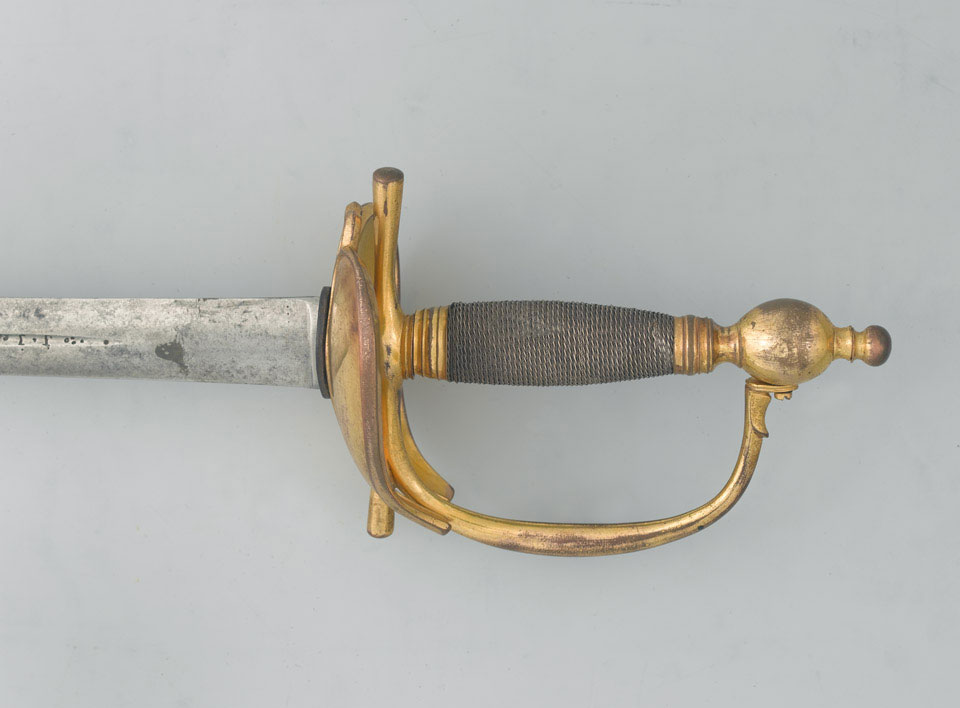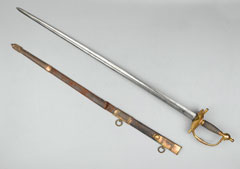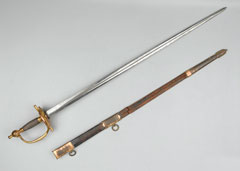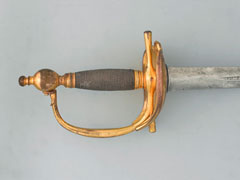
Online Collection
« Prev - 1 of 1 results - Next »
General Officer's sword used by Lieutenant-General Sir John Moore, 1809 (c)
John Moore was commissioned into the 51st Regiment in 1776 and saw service in the American War of Independence (1775-83) before returning home to spend six years as a Whig MP. After serving in Corsica and the West Indies, Moore was promoted to major-general and posted to Ireland, where he helped suppress the 1798 rebellion.
After commanding a brigade during the Dutch Expedition of 1799, during which he was wounded, service in Egypt followed, including the Battle of Alexandria on 21 March 1801 where his division bore the brunt of the French attack. Moore subsequently organised the defences of the English south coast against possible French invasion and it was on his initiative that the Martello Towers were constructed and a militia raised.
It was during this period that Moore established a training camp at Shorncliffe in Kent where light infantry tactics were taught to selected units including the 43rd, 52nd and 95th Rifles, the regiments that afterwards formed the famous Light Division. Moore also made sure his troops were well housed and fed properly, earning himself a reputation as a comparatively humane commander. The barracks there are now named after him. In 1804 Moore was knighted and promoted to lieutenant-general.
In September 1808, following the removal of General Sir Harry Burrard for his signing of the Convention of Cintra, Moore was given command of the British Army in Portugal. He advanced deep into Spain, planning to co-operate with Spanish forces against the French, but the surrender of Madrid and the arrival of Napoleon with an army of 200,000 soldiers forced him to retreat from Salamanca. A fine leader, Moore was able to maintain the morale of his soldiers who were weakened by hunger and cold.
Moore withdrew northwards to the port of Corunna. There he fought a skillful rearguard battle on 16 January 1809 that kept the French from attacking his embarking army. Moore was mortally wounded by cannon shot during the engagement, but lived long enough to learn that he had been victorious. He was buried in the ramparts of the town and his French counterpart, Marshal Soult, was so impressed by Moore that he ordered a monument erected to his fallen foe as a sign of respect.
NAM Accession Number
NAM. 1990-09-1-1
Copyright/Ownership
National Army Museum Copyright
Location
National Army Museum, Conflict in Europe gallery
Object URL
https://collection.nam.ac.uk/detail.php?acc=1990-09-1-1




